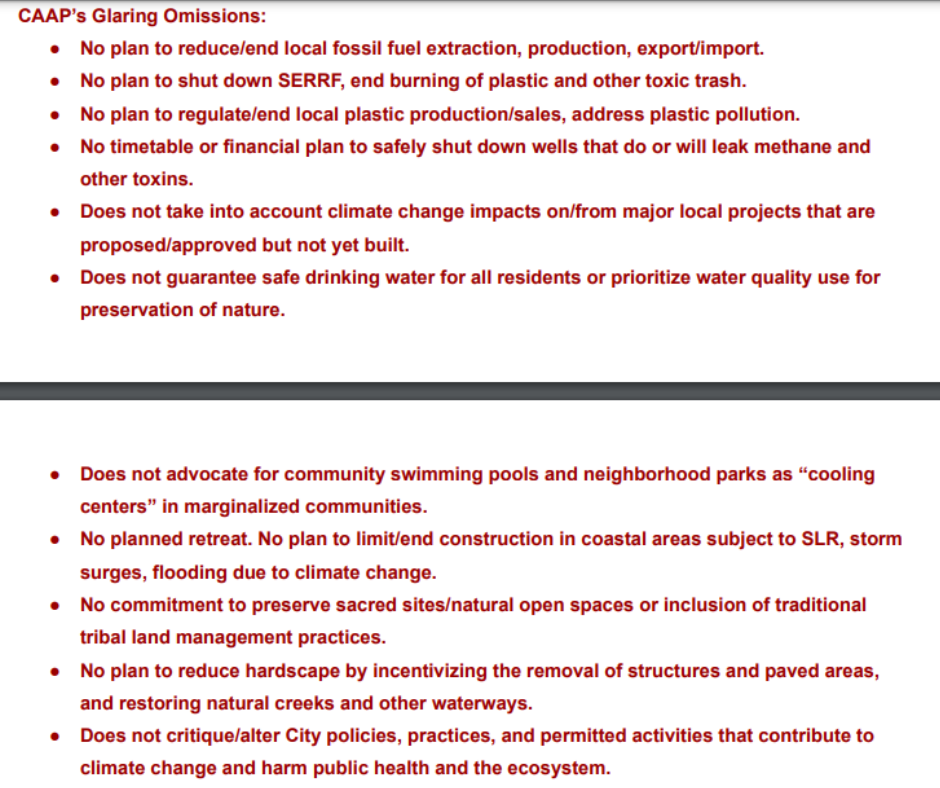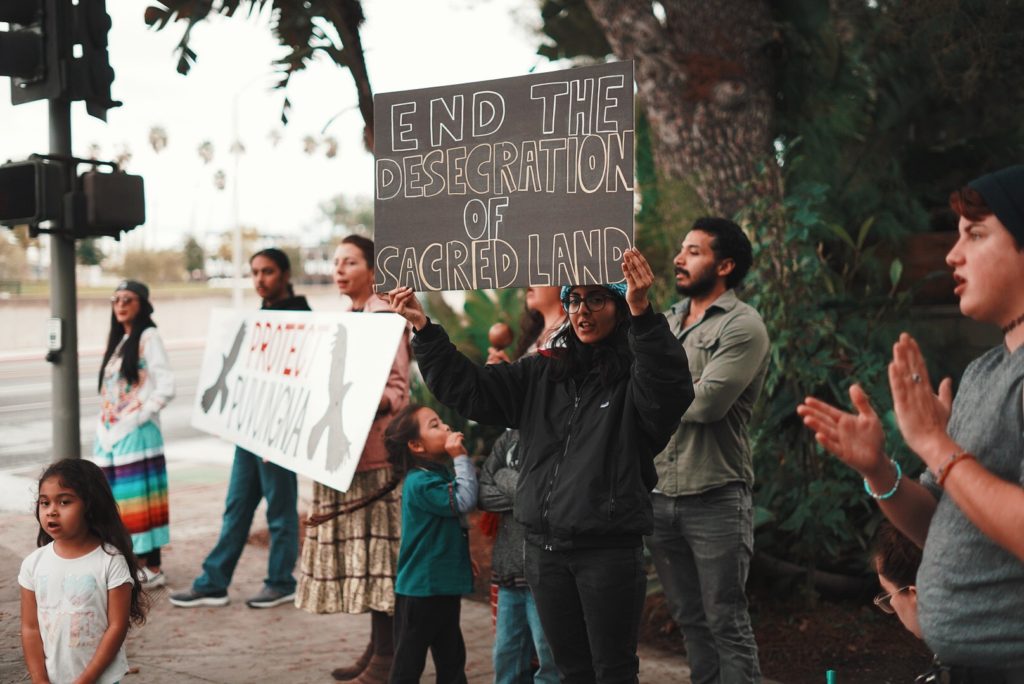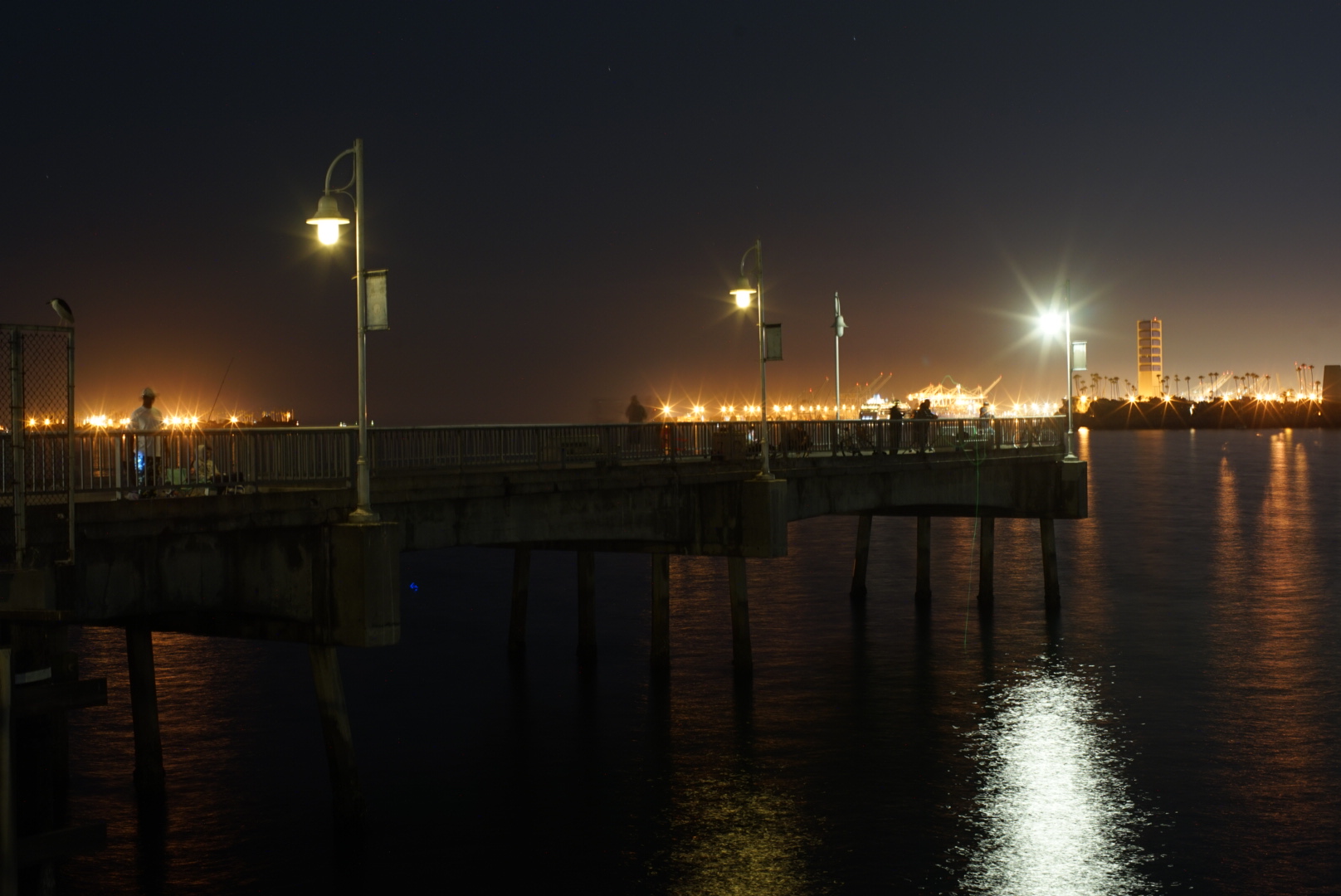LBC Eco Notes: Activists Say City’s Climate Action Plan Has Glaring Omissions; Repeal of Incinerator Incentives Likely
17 minute readWelcome to another edition of LBC Eco Notes!
Last Tuesday, the Long Beach Climate Action Plan (CAP) was unanimously approved by the City Council. In today’s column, I will touch on some of the critiques and suggestions for improving the plan put forth by local environmental justice groups. I will also go over Assembly Bill 1857, which would repeal legislation from the late ‘80s that incentivized using incinerators to burn trash, and why our City Manager doesn’t approve. Lastly, I will be sharing some local resources, action items, and events hosted by forward-thinking environmental groups.
LONG BEACH’S CLIMATE ACTION PLAN
After five years of development, last Tuesday the City Council approved the Long Beach Climate Action Plan. According to the city’s website, the plan is necessary in order to make good on a pledge Mayor Robert Garcia signed back in 2015 to combat climate change with a coalition now called the Global Covenant of Mayors. The plan, according to the city, also provides a framework to fulfill state mandated reductions of greenhouse gasses from legislation such as Assembly Bill 32 (the California Global Warming Solutions Act of 2006). Senate Bill 379 also mandated that cities and counties include “climate adaptation and resiliency strategies in the safety elements of their general plans” by January 2017. This long overdue plan includes the goal to lower emissions by 40% of 1990’s levels by 2030 and become carbon neutral by 2045.
The hefty 875-page document covers a range of proposals for Long Beach to tackle issues related to air quality, drought, rising temperatures, and sea level rise. During Tuesday’s hearing, Garcia said he was most excited about the parts of the proposal that had to do with housing (such as creating dense, walkable cities and electric mandates) and transit (making it more accessible and connective as well as free “for certain groups” at Cal State Long Beach).
OVERDUE & NOT ENOUGH
Christopher Koontz, the acting Development Services director, fielded questions regarding the CAP from council members during the hearing. Transportation was acknowledged as a major emitter of toxic emissions by Koontz, although the issue was blamed on the large number of drivers and not the vehicles themselves. Transforming the city into a place where folks have less of an urge to drive everywhere was discussed. Koontz summed up the city’s position by saying there was a need to create more walkable cities by making “subtle changes and aggregat[ing] them up.”
This statement seemed representative of the issues critics have with the plan, which is seen as overdue but not aggressive enough to reach its lofty goals. Now is not the time for subtlety. In a letter to the City Council, the Los Cerritos Wetlands Task Force (which is affiliated with the Sierra Club) listed several “glaring omissions” in the plan such as the lack of commitment to ending construction in coastal areas and ending the reliance on fossil fuels.

The letter also mentioned that their suggestions had been submitted before in various contexts “related to policies, permits, practices, and developments that harm our City, including damage to and erasure of natural areas and tribal sacred sites.” LCWTF and the Sierra Club would like to see the council “take direction from tribal culture keepers and tribal ethnobiologists.”
According to the city’s own presentation, Long Beach officials reached out to the Native American Heritage Commission (NAHC) to find out who the local Indigenous leaders were and contacted them in July 2021. (No names or specific tribal affiliations were given.) This was well into the drafting of the climate plan, which reportedly began in 2016.
In their letter, LCWTF and the Sierra Club also demanded the prioritization of low-income communities and those who will be most affected by rising temperature levels (rather than the affluent coastal locations of Belmont Shore and the Alamitos Peninsula, which are specifically named in the plan). LCWTF would like for community pools and shade trees in parks to be considered “cooling centers” instead of that designation being reserved solely for air conditioned buildings. The organizations believe the city needs to amp up their planting of mature native trees at bus stops and other places in need of more shade.
When it comes to rising sea level issues, the CAP mentions looking into “managed retreat” (which is controversial but mainly for coastal homeowners that do not want to be displaced). However, LCWTF believes we are past that point, saying it “must be implemented, not just investigated, immediately.” They also called for banning Petcoke (a fuel source similar to coal that is too dirty to burn within the state but is exported from the Port of Long Beach) and ceasing to use potable groundwater for oil/gas drilling and refinement.
During public comment, Kenny Allen, an organizer with the local chapter of the Sunrise Movement, challenged a comment made by Vice Mayor Rex Richardson about Long Beach “exhibiting leadership” by passing the CAP. Allen claimed that 600 other cities have already put similar climate action plans into place.
On a recent episode of Long Beach Chisme, a FORTHE-produced podcast, Allen, who was a featured guest, noted, “The City is just codifying what they were [already] going to do anyway.”
It remains to be seen how influential community pressure will be going forward, but people power can be very persuasive. City officials such as Councilmember Roberto Uranga referred to the plan as a “living document” that would be refined over time, so activist groups are encouraged to continue to push them towards more effective actions. Koontz said that the process of implementing all of the proposed actions in the CAP will take several years but that there will be public engagement all along the way. Every two years the city will also conduct an inventory of greenhouse gasses in order to assess needed changes.

END OF INCINERATOR DIVERSION CREDITS IMMINENT
Since the passage of the Integrated Waste Management Act of 1989 (Assembly Bill 939), California cities have been rewarded for sending a portion of solid waste to the closest incinerator to be burned. AB 939 was intended to reduce the amount of trash added to landfills within the state by 50% and encourage transformative methods such as recycling and composting. Cities are allowed to use incineration for 10% of their part of the required 50% waste reduction. Essentially, burning trash was given the same value as recycling and composting for its waste-to-energy capabilities, although it provides only .03% of the total electricity used in Los Angeles County.
In February, California Assemblywoman Cristina Garcia (D-Bell Gardens) introduced AB 1857, which proposed redefining the use of incinerators as “disposal” and would repeal the diversion credit given to cities for burning a portion of their solid waste. The bill would also require the administration of funding via a “Zero-Waste Equity Grant Program” for jurisdictions that are doing the work to “transition to a zero-waste circular economy.”
The majority of incinerators across the country are located in what are commonly referred to by activists and even governmental agencies as environmental justice areas—places already burdened with pollution that are also predominantly populated by folks who are low-income and/or people of color. This is true for the last two incinerators remaining in California; Covanta Stanislaus in Stanislaus County and the Southeast Resource Recovery Facility (SERRF) in Long Beach. SERRF began operating the year before AB 939 was passed, which was more than 30 years ago.
A recent report from Earthjustice showed that these facilities have required millions of dollars in subsidies, while still causing pollution that city officials claim is nontoxic, all while providing only a tiny fraction of our energy needs.
Back in 1984, a Los Angeles consulting firm named the Cerrell Agency was paid by the California Waste Management Board to determine where to site the incinerator. In the resulting Cerrell Report, which was shared widely by a group called the Energy Justice Network, the Waste Management Board was encouraged to target low-income folks who were “least likely to resist.”
Their prejudiced assessment would be proven wrong. AB 1857 was co-sponsored by East Yard Communities for Environmental Justice (EYCEJ), a group that has members living within a few miles of SERRF that have been pushing against the incinerator for over a decade. EYCEJ members also include residents of other communities that live along the 710 freeway, a corridor known as the “Diesel Death Zone.” The multigenerational group helped Assemblymember Garcia to draft the initial version of the bill.
“Burning trash in overburdened communities is an example of how environmental racism is normalized in our policies,”Assemblymember Garcia said in a press release.
Greenwashed solutions like incineration slow down progress toward zero emissions. Their use tends to de-incentivize the powers that be from being innovative when it comes to upcycling, creating citywide composting efforts, or otherwise making a serious effort to reduce our waste.
“We don’t want an entity that needs trash in order to maintain itself,” said EYCEJ Co-Director Taylor Thomas during a community presentation on the myths of recycling plastic.
There is hope as AB 1857 is nearing the finish line. After passing the Assembly, the bill passed the State Senate Appropriations Committee on Aug. 11 and is now headed to the Senate floor. The next stop would be the governor’s desk!
SERRF’S UP?
In a presentation given on April 5 to the City Council by City Manager Tom Modica and Robert Dowell, director of the Long Beach Energy Resources Department, AB 1857 was referred to as a “death sentence” for SERRF.
In a letter sent to Assemblymember Garcia on April 28, Modica framed the choice between incineration and packing landfills with more trash as a binary one with no other alternatives. He also spoke of financial concerns.
“Eliminating this credit will most certainly jeopardize jurisdictions’ ability to meet State diversion objectives, subjecting them to significant financial and regulatory penalties,” Modica wrote.
Tomisin Oluwole
Ode to Pink II, 2020
Acrylic and marker on paper
14 x 22 inches
Click here to check out our interview with Tomisin Oluwole, a a literary and visual artist based in Long Beach.

Instead of gunking up our site with ads, we use this space to display and promote the work of local artists.
He also expressed concern for the “environmental justice” communities that would be impacted, saying that “the legislation will undermine the State’s environmental goals to reduce greenhouse gas emissions by forcing jurisdictions to transport municipal solid waste to landfills across California and in neighboring states.”
Treating the burning of trash as if it were an eco-friendly practice is an example of greenwashing. EYCEJ and other local environmental justice groups have countered Modica’s messaging by pointing to the need to prioritize composting, create more effective recycling and repairing practices, and push for reuse, as well as finding ways to reduce the creation of trash in the first place.
“We are tired of false solutions,” said Thomas.
CITYWIDE COMPOST MANDATE STILL UNFULFILLED
Food waste makes up a significant portion of solid waste in Long Beach and California in general. Senate Bill 1383 (Lara, chapter 395), which requires Long Beach to have a citywide curbside collection program for food scraps and yard debris, was passed in 2016 as part of California’s larger strategy to combat climate change.
The program was initially supposed to be in place by January 2022, but it has yet to be implemented in Long Beach. The city website acknowledges the positive impact of composting, but focuses on educating the public to handle their own food waste while selling compost bins for a “reduced rate” of $15-45. (They are currently on backorder; if interested in procuring your own compost bin, click here to fill out the waiting list form.)
The city has said they are working on developing the residential organics collection program, but defends the slow roll-out by saying, “like many other cities in the state, [the program] has experienced some challenges due to supply shortages and a lack of infrastructure in the area to support the processing of organic materials.” According to their website, “the City is not able to provide this service at no cost,” but they will alert residents before it is added to their bill.
In the meantime, folks can drop off their food waste with grassroots group Long Beach Community Compost at Willow Springs Park on Fridays from 8 to 9:30 a.m. and Saturdays from 10 to 11:30 a.m. or at the DTLB Farmers Market on Fridays from 11 a.m. to 1 p.m.
NEWS BRIEFS & ACTION ITEMS
NEW: LBUSD School Board Passes Green Energy Policy
Success! After two years of advocacy by a group of student activists with the Long Beach Green Schools Campaign (LBGSC), the School Board has approved the Green Schools Operations Energy and Sustainability Policy 3510.1. The goal of the plan is to reduce emissions and to hopefully be fully using renewable energy sources by 2045.
NEW: Extended Producer Responsibility Act Signed by Gov. Newsom
After several other versions have failed to pass over the last three years, SB 54—an extended producer responsibility (EPR) bill—was signed into law by Governor Gavin Newsom on July 1. The Ocean Conservancy helped draft the language of the bill, which forces single-use plastic items to be recyclable and is intended to push manufacturers into using less plastic in their packaging overall (with some exceptions, such as for pharmaceuticals) by 2032. It also helps shift the financial responsibility for recycling onto the producers rather than taxpayers. Though the law is considered by many as the most ambitious in the nation with regard to plastic regulation, the lack of urgency has been criticized as entities are given up to 10 years to comply.
NEW: Regional Hydrogen Hub Participation is Approved
The City Council unanimously passed a motion to work with the city and county of Los Angeles to seek federal grant money to create a regional hydrogen hub that will include the Port of Long Beach.
According to a Bloomberg article published earlier this year, “proponents of hydrogen energy claim it can replace gas and diesel and is integral to decarbonizing efforts,” but also noted we must be careful to prevent leaks or it can be worse than carbon with regard to climate change implications.
Activists point to other issues with the use of hydrogen. The cheapest and most prevalent way to get hydrogen (95% is obtained this way) is by using natural gas. This means there are still a considerable amount of emissions released during its lifecycle. Some folks consider it as just an intermediate solution while renewable sources and the infrastructure it needs (such as charging stations for electric vehicles) are put more firmly into place. EYCEJ and Earthjustice are two environmental justice advocates that consider natural gas a false solution standing in the way of zero emissions goals.
TO DO: Push CARB To Improve Advanced Clean Fleets Rule
The Natural Resources Defense Council (NRDC) is advocating for the improvement of the Advanced Clean Fleets Rule (ACF) saying it needs strengthening by the California Air Resources Board (CARB). Making changes, such as pushing for 100% zero emissions sales by 2036 and including a wider range of trucks in the legislation, would “send a clear market signal to manufacturers and fleets, helping unlock private sector investments in zero-emission solutions.”
TO DO: Donate Gently Used Clothes on Aug. 26
Help divert your clothes from the waste stream by bringing them to Flora Y Tierra on Aug. 26 between 5 and 7:30 p.m. A community center on Seventh Street downtown that prioritizes serving QTBIPOC folks, Flora Y Tierra’s mutual aid organization is specifically looking for sturdy denim pants and shorts as well as tops and jackets. Please save any ripped or stained clothes for your art projects as the group wants to respectfully give serviceable clothes that are still in good condition to people in need.
TO DO: Join Sunrise Movement LB’s Monday Night Meetings
The Long Beach chapter of the Sunrise Movement was started in 2019 by a group of Cal State Long Beach students. On a federal level, the group is working to further popularize the Green New Deal, which advocates for healthy, environmentally conscious jobs that are beneficial to workers and do not exacerbate climate change. In Long Beach specifically, they have joined the People’s Budget Long Beach Coalition in urging the city to fully fund both oil field abandonment reserves and free public transportation. For more information on the people’s budget, click here.
Sunrise Movement’s meetings are held every Monday, except the third Monday of the month. To join, please click here.
ICYMI
Climate Change: We Hear You, We See You, We’ll Consider Sucking up Oil with a Paper Straw (LB Chisme podcast, available wherever you get your podcasts.)


 erin@forthe.org
erin@forthe.org




